A pair of Japanese schoolgirls primp their hair before a long mirror, preparing for the perfect picture, but they are not taking a smartphone selfie, they are using a purikura photo booth.
Old-style photo booths have staged something of a comeback in parts of the world in the past few years, for their nostalgic value in the smartphone era, but the purikura — an abbreviation of the Japanese pronunciation of “print club” — offers much more than a simple strip of passport photographs.
Featuring a dizzying array of retouches, enhancements and adornments, they remain hugely popular 25 years after they debuted in Japan, particularly with teenage girls and young women enamored with their kawaii, or cute, output.
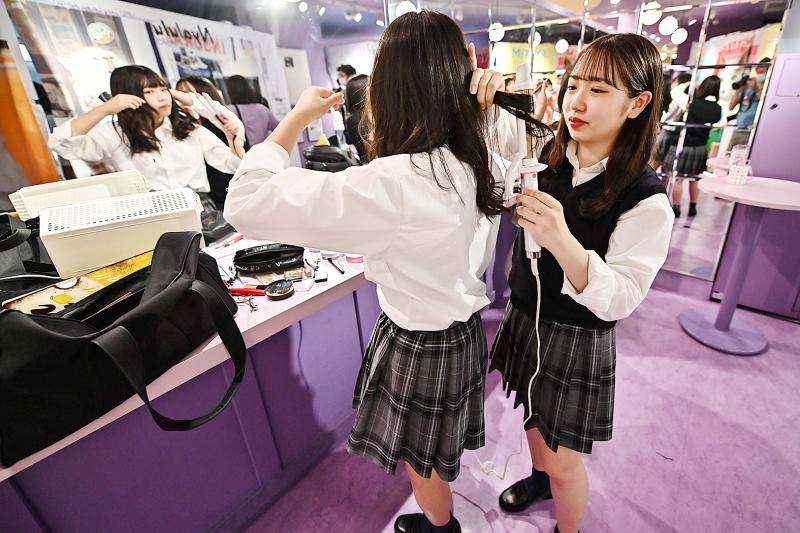
Photo: AFP
Despite competition from smartphones and increasingly sophisticated retouching apps, at least one Japanese firm is banking on the purikura’s enduring appeal and rolling out a new model this year.
Nonoka Yamada, 17, has been a purikura fan for almost a decade, and said that she and friends use them several times a week.
“All the girls in my class take purikura,” she said as she prepped for her picture at a department store in Tokyo’s Shibuya district.
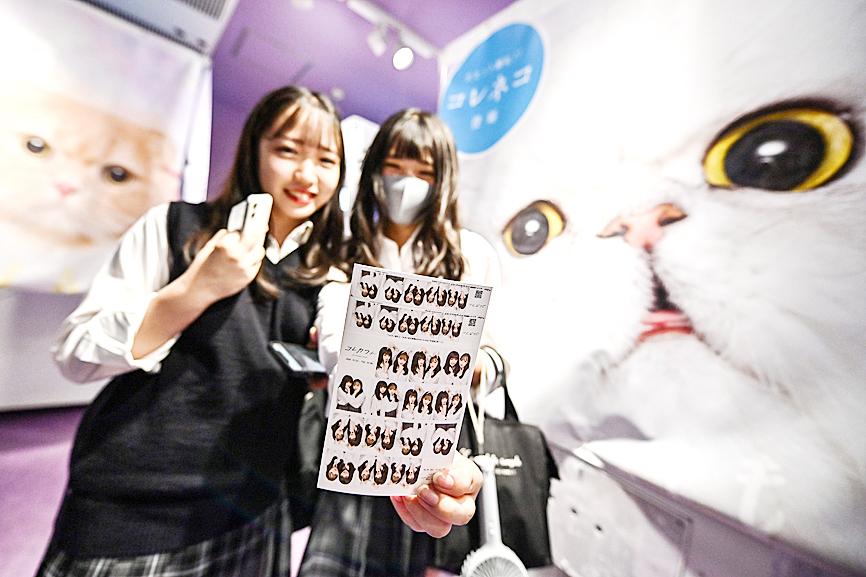
Photo: AFP
“The first time I used one I was eight, and the camera lens was too high so I had to stand on my tiptoes,” she said, adding that purikura offer more than a simple smartphone selfie.
“It lets you make yourself look cute, you can change your face,” she said. “I want to put the pictures on Instagram ... the images are good quality with good lighting.”
The first purikura was the brainchild of Japanese firm Atlus Co Ltd, which launched the product in partnership with Sega Corp in July 1995.
The booths quickly became a popular feature at Japanese gaming arcades, where long lines of schoolgirls waiting to have their photos taken transformed the previously male-dominated arcade customer base.
Other companies quickly jumped into the market, which by 1997 was worth more than US$950 million a year, but the selfie era took a toll, with users increasingly able to take and retouch photos free with their phones, rather than paying about ¥400 (US$3.78) for a sheet of about 16 photos.
Some manufacturers went under, while others abandoned the purikura business for more profitable ventures.
Today, just one manufacturer remains: FuRyu Corp, a former affiliate of the Japanese electronics firm Omron Corp.
“In 1997, we launched our first machine using Omron technology, which offered caricature faces. It was a total flop,” FuRyu spokeswoman Yuki Hikita said. “It had nothing to do with what young girls wanted, probably because it was developed by middle-aged men.”
The company began consulting customers directly and credits focus-grouping with its longevity.
In the past few years, the market has stabilized, with about 10,000 purikura dotted around the country — down from the 1997 peak of 50,000.
While the booths are less pervasive these days, they remain popular — a FuRyu phone app for receiving purikura photos had 19 million registered users in March.
Yuka Kubo, an independent researcher who studies the purikura phenomenon, has traced how the booths evolved over time.
Early models featured little more than cutesy borders around photos, with the first limited retouching tools debuting around 1998.
Facial recognition technology incorporated in 2003 allowed specific features to be altered, particularly the eyes.
“That was the start of the fashion for enormous eyes,” said Kubo, referring to a popular feature giving customers the doe-eyed gaze of anime characters.
“It started a competition between manufacturers, driven by demand from girls, over who could offer the biggest eyes,” she said.
In the past few years, retouching options have become more sophisticated, offering tints and shades to give the appearance of perfect skin or a slimmer face, and while smartphones and apps offer retouching features, Hikita said that there is still room for purikura.
“To take a good selfie with a phone, you need a bit of skill,” she said.
With purikura, “everything is automatic, with professional equipment and lighting, like a studio photo.”
The COVID-19 pandemic has meant new measures to keep customers safe, including disinfectant at every booth, but it has not kept fans away.
“Customers are already coming back, much faster than we had expected,” Hikita said.
In a sign of the sector’s enduring appeal, Sega announced this month that — more than two decades since it launched the first model — it would introduce a new version later this year, with the goal of “spreading purikura culture.”
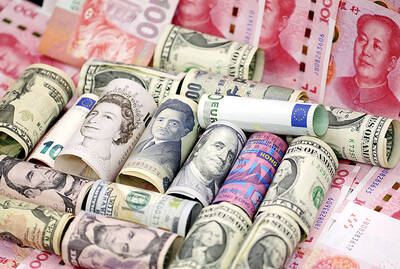
Taiwan’s foreign exchange reserves hit a record high at the end of last month, surpassing the US$600 billion mark for the first time, the central bank said yesterday. Last month, the country’s foreign exchange reserves rose US$5.51 billion from a month earlier to reach US$602.94 billion due to an increase in returns from the central bank’s portfolio management, the movement of other foreign currencies in the portfolio against the US dollar and the bank’s efforts to smooth the volatility of the New Taiwan dollar. Department of Foreign Exchange Director-General Eugene Tsai (蔡炯民)said a rate cut cycle launched by the US Federal Reserve

The US government on Wednesday sanctioned more than two dozen companies in China, Turkey and the United Arab Emirates, including offshoots of a US chip firm, accusing the businesses of providing illicit support to Iran’s military or proxies. The US Department of Commerce included two subsidiaries of US-based chip distributor Arrow Electronics Inc (艾睿電子) on its so-called entity list published on the federal register for facilitating purchases by Iran’s proxies of US tech. Arrow spokesman John Hourigan said that the subsidiaries have been operating in full compliance with US export control regulations and his company is discussing with the US Bureau of
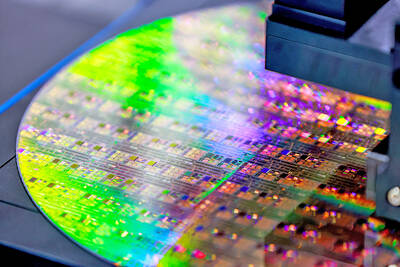
Businesses across the global semiconductor supply chain are bracing themselves for disruptions from an escalating trade war, after China imposed curbs on rare earth mineral exports and the US responded with additional tariffs and restrictions on software sales to the Asian nation. China’s restrictions, the most targeted move yet to limit supplies of rare earth materials, represent the first major attempt by Beijing to exercise long-arm jurisdiction over foreign companies to target the semiconductor industry, threatening to stall the chips powering the artificial intelligence (AI) boom. They prompted US President Donald Trump on Friday to announce that he would impose an additional
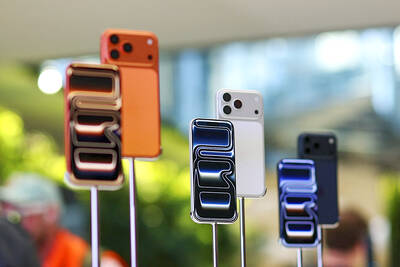
Pegatron Corp (和碩), a key assembler of Apple Inc’s iPhones, on Thursday reported a 12.3 percent year-on-year decline in revenue for last quarter to NT$257.86 billion (US$8.44 billion), but it expects revenue to improve in the second half on traditional holiday demand. The fourth quarter is usually the peak season for its communications products, a company official said on condition of anonymity. As Apple released its new iPhone 17 series early last month, sales in the communications segment rose sequentially last month, the official said. Shipments to Apple have been stable and in line with earlier expectations, they said. Pegatron shipped 2.4 million notebook